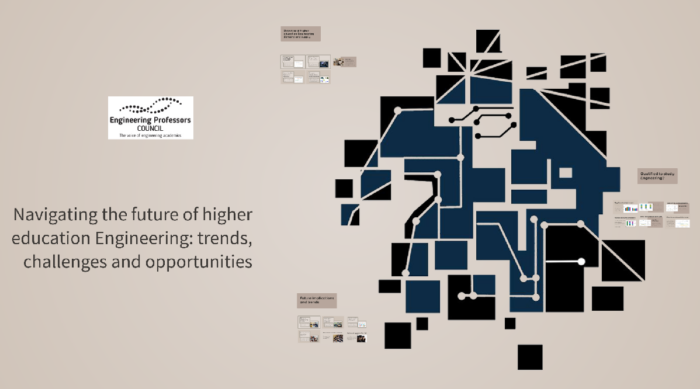 Author: Martin Griffin (Knight Piésold Consulting, United Kingdom).
Author: Martin Griffin (Knight Piésold Consulting, United Kingdom).
Keywords: Equity; Equality, diversity and inclusion (EDI); Collaboration; Bias; Social responsibility; Design.
Who is this article for? This article should be read by educators at all levels in higher education who wish to integrate social sustainability, EDI, and ethics into the engineering and design curriculum or module design. It will also help to prepare students with the integrated skill sets that employers are looking for.
Premise:
No engineer is an island; it is not good for an engineer to act in isolation. Rather engineers need to be part of a welcoming community in order to thrive. How an engineering professional interacts with either other engineers and non-engineers is essential for building a culture and professional environment of collaboration, creating environments where engineers can create meaningful bonds with one another and feel comfortable communicating openly. This requires recognising and understanding how unconscious bias and privileges can create divides and foster negative professional (toxic) environments, and being committed to establishing standards of conduct for and addressing issues related to EDI. There is a great need to advocate for fellow engineers providing places to belong and empowering them to thrive in their chosen profession and career pathways. This includes people who are part of one or more underrepresented groups that have been historically, persistently, and systemically marginalised in society based on their identity, such as race, colour, religion, marital status, family status, disability, sex, sexual orientation, gender identity, and age.
The Royal Academy of Engineering and EngineeringUK (2018) frequently publish reports on the demographics of engineers and the skills shortage in the workforce. These reports highlight the under-representation of people from ethnic and minority groups, those with a disability or impairment, or those who are LGBTQ+. In addition, the Institute of Engineering and Technology recently reported that only 9% of businesses take particular action to increase underrepresented groups into their workforces.
Engineering and technology are for everyone. It is morally right to ensure that everyone has equal opportunities and by doing so we can improve our world, shape our future, and solve complex global challenges. In order to accomplish these moral imperatives, we need to include a diversity of talent and knowledge. Furthermore, in the UK we still face a nationwide skills shortage threatening our industry. To address this and ensure the sustainability of our industry we must support equal opportunities for all and be truly inclusive.
The three values:
The three values of EDI are timeless and should be embedded into the way that engineering professionals act, starting with recognition that the unfair treatment of others exists. This unfair treatment may take the form of bullying, harassment, discrimination (either direct or indirect), victimisation, microaggressions, gaslighting, bias and inequity. An engineer’s role must also include advocating for the support of others in this regard too. Each of the three values are very different, but all three together are essential to create opportunities for engineers to grow and thrive, and for a productive and creative engineering community to flourish.
Equity encourages fair processes, treatment, and possibilities for everyone, resulting in an equal playing field for all. It acknowledges that oppressive systems have created varied circumstances for different engineers. By valuing equity, engineers must commit to fairly redistributing resources and power to address inequalities that systems have intentionally or unintentionally created, diminishing the impact of such circumstances and ensuring equitable opportunities. Equality relates to ensuring engineers and groups are treated fairly and have access to equal opportunities. Note, it should be emphasised that equity is not the same as equality; in the simplest terms, equality means ‘sameness,’ and equity means ‘fairness’. Thus, equality has become synonymous with ‘levelling the playing field’, whereas equity is synonymous with ‘more for those who need it’.
Diversity refers to how diverse or varied a particular environment is, be it an engineering consultancy, academic funded research team, interdisciplinary joint venture designing as part of a national megaproject, and so on. Diversity involves professional openness and conscientiousness towards diverse social interactions. Therefore, diversity also involves intentional representation and collaboration with others from different demographic characteristics, identities, and differing experiences. Engineers should feel welcome to be their full self without the need to mask, being able to contribute and bring fresh perspectives where they are in attendance.
Inclusion refers to a state of conscious belonging, meaning all are respected, empowered, and valued. Inclusivity should therefore be ingrained in an engineer’s daily operations and surrounding culture, being able to feel comfortable being their authentic selves. Inclusion involves extensive representation across roles, levels (grades) and the aforementioned demographic characteristics, recognising who is and is not in the room and the valuable perspectives and experiences they can bring. Inclusion also relates to ensuring all engineers feel valued and supported, where the benefits of creativity, innovation, decision making and problem solving are realised.
Incorporating EDI in engineering education:
It is not possible to place EDI in a box and open it occasionally such as for annual awareness weeks or as an induction week module. It is a lifestyle, a conscious choice, and it needs to be embedded in an engineer’s values, approach and behaviours. Making engineering EDI an integral part of engineering ethics education will not involve an abstract ethical theory of EDI but rather a case-based approach. The teaching of EDI within engineering ethics through case studies helps students consider their philosophy of technology, recognise the positive and negative impact of technology, imagine ethical conduct, and then apply these insights to engineering situations. Moreover, when similar ethical modules have touched students, they are likely to remember the lessons learned from those cases. Several case studies found in the Ethics Toolkit that reference EDI concerns are listed at the end of this article.
Good contemporary practical examples should be presented alongside case studies to promote and demonstrate why EDI ought to be embedded into a professional engineer’s life. The need to raise awareness, highlight the issues faced, and accelerate inclusion of Black people is provided in the Hamilton Commission report, focusing on all aspects of UK Motorsport including engineering. The importance of gender inclusivity in engineering design and how user-centred practices address this are addressed by Engineers Without Borders UK. Creating accessible solutions for everyone, including those who are disabled, is seen in the ongoing development of Microsoft’s Accessibility Technology & Tools. BP has launched a global framework for action to help them stay on track and progress in a positive way. The further benefits EDI brings to design and delivery in construction engineering are demonstrated by Mott Macdonald.
Inclusive Engineering (similar to the principles of Universal Design) ensures that engineering products and services are accessible and inclusive of all users. Inclusive Engineering solutions aim to be as free as possible from discrimination and bias, and their use will help develop creative and enlightened engineers. Ethical responsibility is key to all aspects of engineering work, but at the design phase it is even more important, as we can literally be designing biases and discrimination into our technological solutions, thus amplifying existing biases. Recommended guidance is provided within PAS 6463:2022 as part of the engineering design process; this is a new standard written to give guidance on designing the built environment for our neurodiverse society. With the right design and management, it is possible to eliminate, reduce or adjust potentially negative impacts to create places where everyone can flourish equally.
It is vital to recognise that achieving true equality, diversity, and inclusion is complex and cannot be ‘fixed’ quickly. An engineer must participate in active learning and go on a six stepped journey of self-awareness from being ‘not listening,’ ‘unaware,’ ‘passive,’ ‘curious,’ and ‘ally,’ to ‘advocate.’ A ‘not listening’ attitude involves shaming the unaware, speaking on behalf of others, invalidating others, clumsy behaviours, being bigoted, prejudiced, antagonistic and unwilling to listen and learn. Cultivating an ‘ally’ attitude is being informed and committed, routinely and proactively championing inclusion by challenging accepted norms, and taking sustained action to make positive change. It is for this reason the values of EDI should be part of an engineering professional’s ongoing lifestyle to have any real and lasting effect on engineering environments.
Therefore, the importance of EDI needs to influence how an engineering professional thinks, acts, includes others and where engineers seek collaborative input. The concept of engineering is far more important than any individual engineer and sometimes engineers need to facilitate opportunities for voices to be heard. This involves respect and empathy to create trusted relationships and the need for self-awareness and self-development. Sometimes this means stepping back so that other engineers can step forward.
Resources and support:
Specific organisations representing protected characteristics such as InterEngineering have the goal to connect, inform and empower LGBTQ+ engineers. Likewise, the Women’s Engineering Society (WES) and the Association for Black Engineers (AFBE-UK) provide support and promote higher achievements in education and engineering. The aforementioned organisations are partnered with the Royal Academy of Engineering to highlight unheard voices, raise awareness of the barriers faced by minority groups, and to maximise impact. Many other umbrella groups, for instance Equal Engineers, also raise awareness of other underrepresented groups, such as the neurodivergent in engineering, by documenting case studies, undertaking surveys, holding regular careers events and annual conferences, and more.
There is evidence to support the widely accepted view that supporting and managing EDI is a crucial element in increasing productivity and staff satisfaction. Diverse experiences and perspectives bring about diversity of thought which leads to innovation. It allows everybody to be authentic at work and provides the opportunity for diverse voices to be heard. Consequently, implementing EDI has proven to increase performance, growth, and innovation, as well as improvements in health, safety and wellbeing. EDI will therefore help to prepare students with the fundamental attitudes that are needed as practitioners and human beings.
Finally, engineering with EDI embedded into a professional engineer’s lifestyle will make a difference to those most in need. In a globalised world it will put us in a good position to bring innovation and creativity to some of the biggest challenges we face together. Equitable, diverse and inclusive engineering must be at the heart of finding sustainable solutions to help shape a bright future for all.
References:
Resources in the Ethics Toolkit that link to EDI:
- Facial recognition for access and monitoring
- Business growth models in engineering industries within an economic system
- Developing a school chatbot for student support services
- Smart homes for older people with disabilities
- Methods for assessing and evaluating ethics learning in engineering education
- Pedagogical approaches to integrating ethics in engineering
- Universal and inclusive co-design of the built environment and the transportation systems
- Ethics Explorer
Additional resources:
- Inclusive Engineering Framework – principles for inclusion
- EngineeringUK Equality, Diversity and Inclusion Strategy 2019-22 – statistics in engineering
- EngineeringUK – State of Engineering report 2018 – statistics
- Engineers Without Borders UK – Inequality in Design
- InterEngineering LGBT+
- The Association for Black and Minority Ethnic Engineers (AFBE-UK)
- Women’s Engineering Society (WES)
- Equal Engineers
- This is Engineering – Diversity of engineers
- The Hamilton Commission - Accelerating Change: Improving Representation of Black People in UK Motorsport
- BP – Global Framework for Action
- Microsoft – Accessibility Technology & Tools
- Mott Macdonald - EDI is good for design and delivery
- IET – Diversity, Equity and Inclusion Statement (facts and infographics)
- UKRI and AdvanceHE – Equality, diversity and inclusion in research and innovation: UK review 2019
- Royal Academy of Engineering – latest research and resources on diversity
- BS PAS 6463:2022 Design for the Mind
- Paredes, I., Palav, A., Woods, C., Kwak, S., Li, R., Bill, V., & Bringardner, J. (2022). Work in Progress: Diversity & Equity Training for Undergraduate Engineering Teaching Assistants. In 2022 ASEE Annual Conference & Exposition.
- The University of Edinburgh, The College of School of Engineering Equality & Diversity HUB
This work is licensed under a Creative Commons Attribution-ShareAlike 4.0 International License.
Any views, thoughts, and opinions expressed herein are solely that of the author(s) and do not necessarily reflect the views, opinions, policies, or position of the Engineering Professors’ Council or the Toolkit sponsors and supporters.




